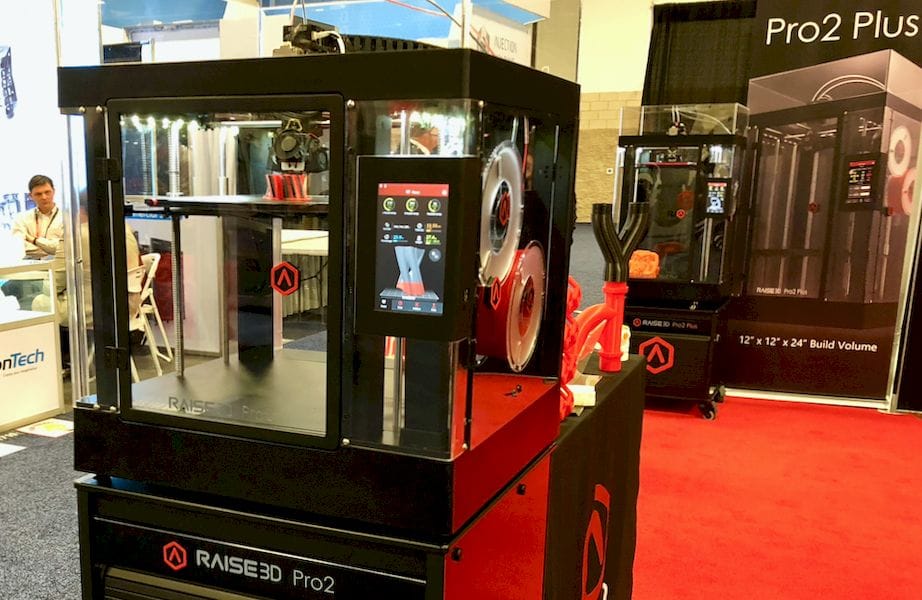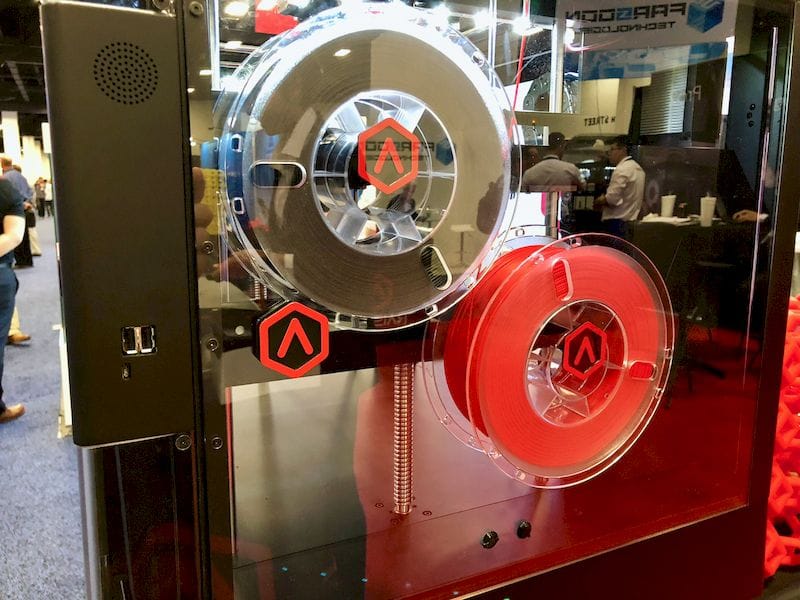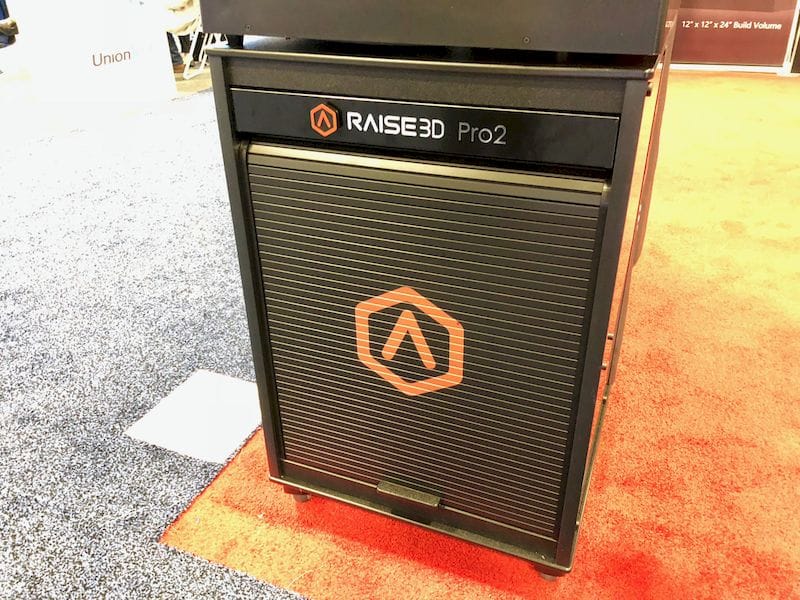
We were a bit mystified when we heard Raise3D announced a new machine, the Pro2.
That was because it wasn’t entirely clear what was new on the machine that made it different from its highly successful predecessors, the N1 and N2. These machines were – and are still – quite capable for use in professional settings due to their reliability, ability to 3D print in multiple engineering materials and large build volume.
How could these machines be made better? We found out by speaking directly to their representatives.
It turns out there are many minor improvements. Here are some of them:
There is now a filament-out sensor that will automatically pause 3D prints if the filament runs out or breaks, cutting off input material. Prints can then resume safely after the filament situation is rectified.

The extruder is now “BondTech-like”, which I presume means that the extruder now employs a dual toothed-wheel design pioneered by BondTech that grabs the filament much more reliably. In fact, Raise3D says they provide 4X the torque of previous equipment.
This change also helps with the 40% weight reduction on the moving parts of the toolhead, which should make faster and more accurate printing possible.
The Pro2 series includes dual extruders, as its predecessors had, but now they are “lifting”. That is to say, the “not-in-use” hot end lifts slightly to put it out of the way. This helps prevent the typical problem of the “other” extruder getting tangled up with any errant plastic on the print and causing a print failure.
Two more cooling fans are present on the toolhead, which will help freeze extruded material much more quickly. This should reduce occurrences of slump and make prints higher quality.
Raise3D has replaced the mechanical end-stops in the machine with optical versions. These are switches that tell the controller when a moving axis has reached its farthest extension, and are critical to operation. They don’t fail often, but Raise3D has made them more reliable with optical sensors that have no moving parts.
There is an easier-to-use knob for adjusting the build plate.
The build plate itself is solid aluminum, which should spread heat much more evenly.
Here’s one you may not notice: they’ve made the color touchscreen “tougher”. I didn’t understand, but when shown how it works, it is indeed better: the screen is now more readable because it does not produce those unsightly liquid ripples when you touch it. You can tap it as hard as you want, within reason, and it’s still quite usable.
The motion controller now has a 32-bit processor instead of the previous 8-bit processor. This should enable much faster printing because the processor will be able to compute motion activities in realtime far quicker.
The Pro2 series includes a HEPA filter to reduce emissions generated during 3D printing operations. This makes the machine a bit more compatible with office environments. In fact, the machine overall is substantially quieter than previous machines from Raise3D.

Raise3D realizes that some users print very large objects, and to help them reduce the hassle of doing so they’ve installed a couple of “exterior filament ports”, where you can feed the Pro2 machines with much larger spools. Normally the spools are mounted inside the build chamber for pre-warming, but that also limits their maximum size. This should reduce the number of times the 3D printer operator must intervene to swap spools.

Here’s a very unusual development. We saw the Pro2 machines at Rapid+TCT, where they were stationed on these attractive stands that were apparently custom build just for display at this show. However, Raise3D received considerable enquiries about them, so they are considering making them an official optional product.

All of these changes are relatively minor alone, but when you add them all up, it seems they’ve done a fairly substantial upgrade in terms of speed, quality, reliability and future performance, if they can leverage the 32-bit processor.
It’s likely they’ve been listening carefully to see how they can make the machine more amenable to buyers. The quietness and air filter, for example, position the machine as appropriate for educational environments, for example. Overall this is a very good upgrade from Raise3D.
Raise3D offers two models (so far) in the Pro2 Series: the standard model with build volume of 305 x 305 x 300mm is priced at USD$3,999 and a “stretch” version with build volume of 305 x 305 x 605mm is priced a bit higher at USD$5,999.
Via Raise3D

